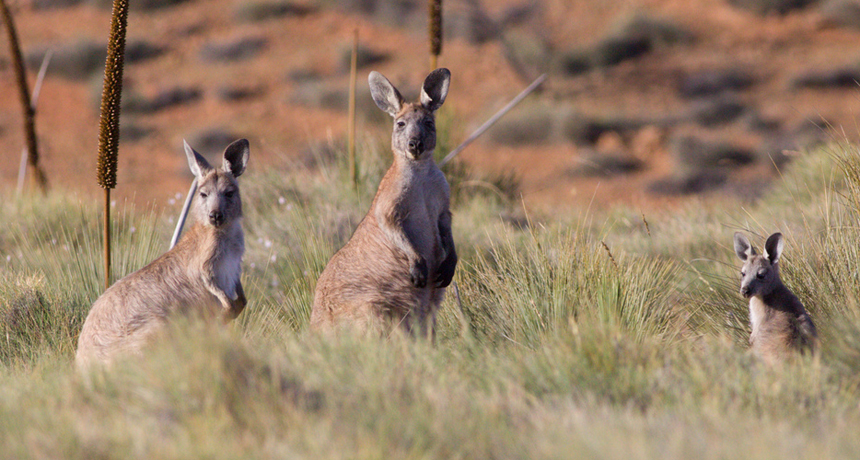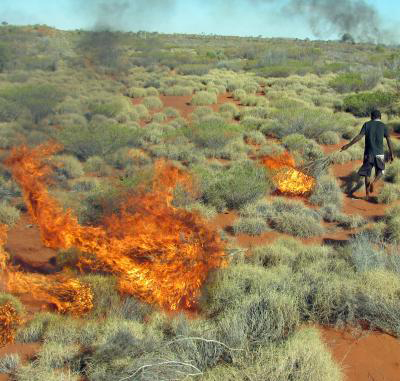Aboriginal lizard hunting boosts kangaroo numbers

The common wallaroo, a type of kangaroo, in Western Australia gets a boost from fires set by lizard hunters.
Ron Knight/Flickr (CC BY 2.0)
- More than 2 years ago
Women of the Martu aboriginal tribe in Western Australia hunt lizards by setting fire to patches of brush to expose the burrows of their prey. And rather than diminishing the number of lizards, this hunting actually leads to an increase in the lizard population, Jessica Shugart noted in Science News last year:
The paradoxical findings … reveal that the lizards prefer to dig their burrows in patches of mature vegetation within frequently burned regions. The lizards may prefer these edges because emerging vegetation from recently burned patches bears more food that attracts goannas’ prey, the researchers speculate.
Men in the tribe hunt a different animal: the common wallaroo. And now researchers report in the August Human Ecology that the fires set to catch lizards also benefit the wallaroos.
Douglas W. Bird of Stanford University and colleagues have been studying the Martu, their hunts and the local ecology since 2000. They’ve been collecting evidence that the Martu people’s interactions with their environment — laws called Jukurrpa that have been passed down from the Dreamtime ancestors — have an overall positive effect. What’s special about these practices is that they aren’t examples of deliberate management. Instead, they’re the outcome of the co-evolution of the aborigines with the local flora and fauna, say the researchers.

In the new study, Bird and his team collected data on the patterns of fire, wallaroo abundance and hunting in the Little Sandy Desert bioregion of Western Australia. The fires the Martu set produce a patchy mosaic of vegetation as the various parts of the landscape recover from burning. And that variety of plant material is great for the wallaroos; there are more of them in regions where the Martu hunt lizards by burning. And wallaroo hunting keeps the marsupial population in check.
The highest numbers of wallaroos can be found when there’s enough fire to provide them with vegetation to eat but not too much hunting — what the researchers call an intermediate level of human interaction.
Most of the time humans are thought of as a disturbance in the landscape. But this is a case in which they are actually an integral part of the local ecosystem. Take the humans out of the equation, and many other parts of the system begin to fall apart. Understanding those interactions, Bird and colleagues write, could help to better manage and preserve the local plants and wildlife — and conserve traditional practices that have persisted for thousands of years.






